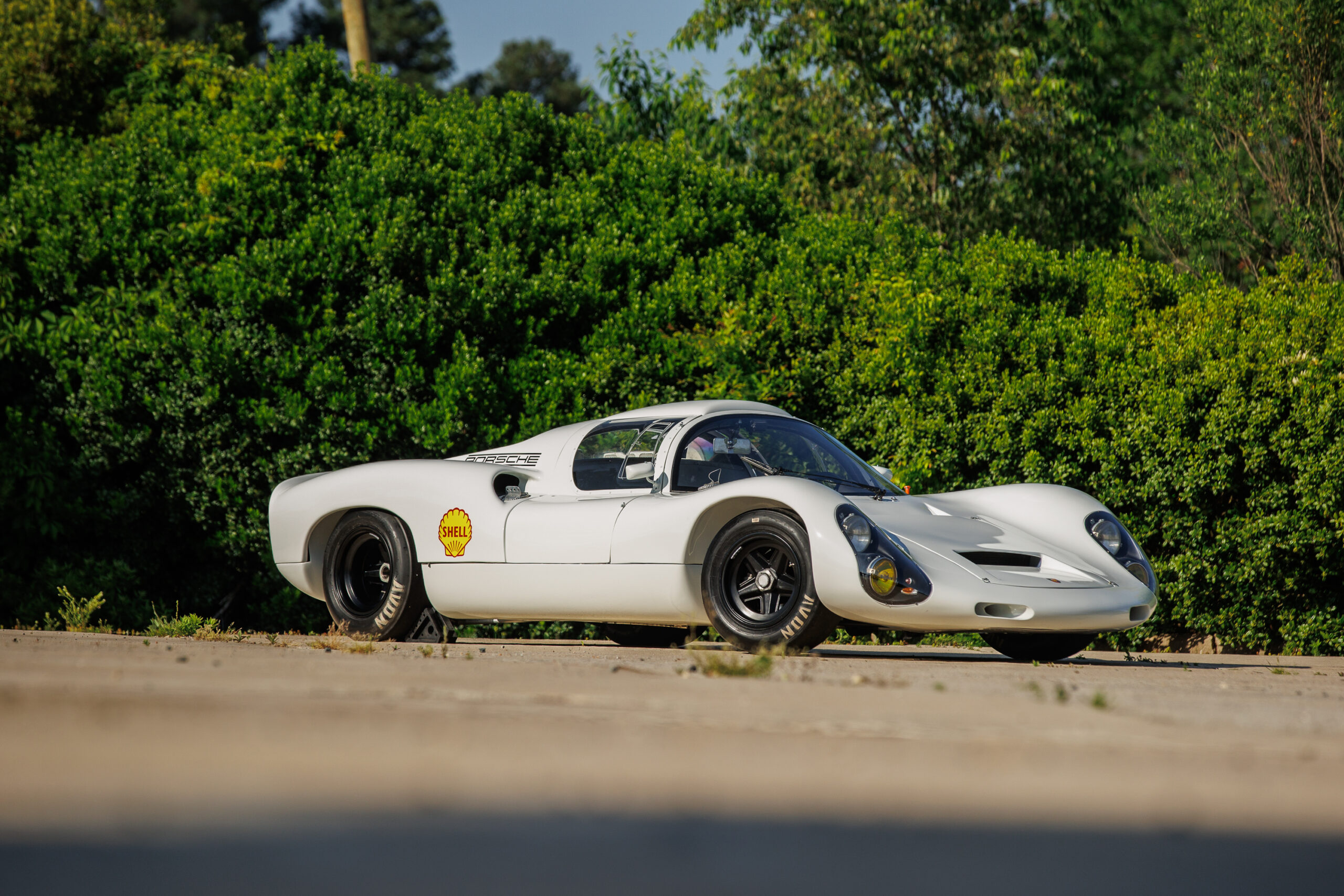With Scottsdale behind us, the first big car week of the year opened the season in which we can all look forward to the next time we automotive enthusiasts can be together. These may be meetings, dinner sit-downs, events, hours hanging out with friends, and auctions all crammed into a few days (for most) with like-minded car guys.
As we move into this new decade where lifestyle and event activities drive our motives for owning cool cars, we envision there will continue to be growth of things to do. Naturally, it’s not possible to take it all in, but there will be ever more choices of where to go and, once there, choices of how you want to spend your time. As someone who frequents all the big car weeks, it is very apparent to us that industry leaders are making a point to have activities for collectors and enthusiasts to take part in. Speaking of that, we send a big thank you to the Otto Car Club, Eli, and his staff for hosting our friends and us. This was an evening during which we shared a couple of our recent restoration triumphs, enjoyed a panel discussion, and simply hung out with friends who were in Scottsdale. We always say that the cars are great but the people make the hobby, and this was a prime example.
Scottsdale 2020 was a busy time; for every event or cocktail reception we attended we politely declined double the number of other invitations. This loaded schedule did not even include eight different auction companies and we’re coming to feel this hinted at our future: that the focus of any car week is no longer simply going to be car auctions. I don’t believe we’re all tired of the auctions, but the days when we looked forward to three “auction” weeks (Scottsdale, Amelia, and Monterey) has mutated over the past few years. Yes, the aforementioned three auction weeks here in the States are the big ones, but we dare say they have been diluted with too many auctions. The only problem with this is of choice: which to attend, and with whom do you consign your auto or from whom you purchase your dream. Auctions can be a fun place to be and an electric atmosphere to be a part of that we don’t think will never change.
What is changing, however, is that this dilution no longer sets market values. Yes, these public sales still provide something of a barometer for the value of your vintage auto. But overall, and importantly, now they are just one data point.
The procedures for valuing cars are always in comparing comparable caliber examples with each other and determining what they trade for in public and equally importantly what happens in private markets. Having access only to half that equation—the public auction side—makes discrepancy if not disagreement in numbers possible. It’s easy to settle on public numbers; they are widely published. But it is very important to remember there are cars trading privately every day in which buyers are doing considerably more diligent inspections and evaluations. The excitement of an auction may yield exciting numbers; but may mask real values.
The intent here is not to criticize the auction houses. The intent with this commentary is to provide feedback a bit different from the normal chapter-and-verse auction recap. Thus overall sale prices declining in Scottsdale is not so big a deal. In fact, it’s simple mathematics: When the number of cars sold across all auction houses is way up of course your averages are going down. This holds hold true in any collector market, whether stamps, coins, or comic books. This isn’t meant as an assessment of market health nor are we predicting where the collector car market is heading. The most expensive car to sell at auction this year in Scottsdale was a Ferrari F50 at Gooding & Co. for approximately $3,000,000. Scottsdale historically has seen a spattering of eight-figure cars role through, so, although the number of blue chip cars was down, that doesn’t indicate the cars auctioned were inferior. This also doesn’t shape market trends. Speculating on what cars sold for, looking at data, and trying to decipher and then characterize the market is merely a waste of time. With the sheer number of automobiles running across the block in all these different venues, it’s not feasible to pull this data together, process it, scrutinize it, and honestly say where our market is currently or headed. If you don’t actually lay your eyes on all the cars and inspect them to determine their value to you or your client, no one can come to any market conclusion outside of generalizations. Any of us who have been associated in the vintage car industry or hobby know the importance of comparing apples to apples and determining values on a per car basis. In the end Scottsdale auctions offered a wide variety of marques of various calibers. And we thought as a whole—from the cars we inspected—they sold for what they should have reached. Of course there were some outliers in both directions, one or two selling for more than we thought was a good number and perhaps some getting that always sought after “deal”. However, if you’ve watched auctions for a while you know this is the usual auction result, which isn’t likely to change anytime soon and which may be one reason why we all love to attend. What we honestly need to eliminate—or at least ignore—is voicing the belief that auctions depict market trends and that just because some auction results are down that our market is not in good shape. You and we understand markets and their ebb and flow activity. We also know if you surround yourself with great cars not good ones…history tells us you will be just fine. Lastly, we recognize if you’re overanalyzing numbers, you’re not having fun with your cars.
This was a summation of what we hear a lot of on a day-to-day basis. Scottsdale kicked off our 2020 and was well attended, as expected. Honestly, the buzz around town and in auction tents was more than I remember over the past couple of years. Now let’s do a breakdown on a couple of Porsches:
1970 Porsche 914/6 GT
Sold at Gooding & Company for $995,000
This certainly was the most anticipated Porsche on offer and it was the one that made our phones ring the most post Scottsdale. It is a fairly well known example in the collecting and vintage-racing hobby, because its previous owners enjoyed sharing the Sunoco 914/6 GT at various events over the years. A hammer price of nearly $1,000,000 was not a surprise to most of us in the industry, but perhaps it came as a shock to those who don’t know how rare and how significant this racer was, thinking it was just some homologated 914. These 914/6 GTs enjoyed numerous successes at the racetracks of Europe and North America in the early 1970s, and the history and provenance behind this Sunoco example drove its value right up to its hammer price. Complete with a great file documenting it’s success, and knowing what a couple others have traded for over the past year, this 914/6 GT certainly deserves is notoriety. We offer our congratulations to its new caretaker. By the way, this result had nothing to do with the 50th Anniversary of the 914. It fairly represents a good number for those who have done their diligence and who know how special, how uncommon, and how accomplished these 914/6 GT racers truly are.
1958 Porsche 356A Speedster
Sold at Gooding & Company for $395,500
Overall this was a good restoration with a nice appearance. It was an interesting case because the Kardex is for the most part blank. This is a rarity but we do see it from time to time. For a buyer, a restorer, a concours judge, it is a really hard one to authenticate due to not knowing the original color combination, engine, and transmission numbers, options, and so on. It presents an opportunity to restore to one’s liking because no one can really prove if it’s authentic or not; the data simply is not there from the factory. This was finished in rare black with green interior, and a 1600 Super engine (likely not original). Fitting the car with authentic Rudge wheels was a highlight. It is a good-looking automobile that will hopefully be driven a lot on weekend get-a-ways. Rounding this up to $400,000 could be debated whether it’s good or bad. Certainly one would think a superior restored good color change, non-matching example with Rudges would bring similar money. However, this must not be confused with your $500K-$600K exceptional pushrod Speedsters.
2004 Porsche Carrera GT
Sold at Gooding & Company for $775,000
2005 Porsche Carrera GT
Sold at RM Sotheby’s for $786,000
Both of these black examples are in line with their estimates. Similar cars, no doubt, though I did not look closely at these two automobiles or their files. Overall, in my opinion, the CGT is undervalued and that makes this money well spent. These sale prices were a fraction of what their other marque super car counterparts demand from this era, and most likely these are the better built! Sure, there might be a service bill to accompany, but that’s the way it is with most all vintage cars; it’s all relative. My point here is if you’re fortunate enough to own a late Carrera GT, it’s one of the best things Porsche has ever done in the minds of a lot of enthusiasts. Appreciate and respect it for what the CGT is: the last of the analog super cars and a driving experience unlike anything else.
1979 Porsche 911 Turbo
Sold at RM Sotheby’s for $390,000
This was a true time capsule example from every angle. And one with only 34 miles. It brought a larger sum than most expected, and it is an outlier, but it’s refreshing to know such interest still exists for a 930 still in its showroom condition. I can only imagine what the number might have been if this were a 1989 or 1975 with equal miles and in a similar overall condition. Perhaps there isn’t as large of demographic looking to purchase these original low mile examples as there has been in the past, but you can be sure there will always be folks willing to pay top dollar for these time capsule examples. Is all this a blasphemy to many who couldn’t stand to own a Porsche and never drive it? Who cares! How cool is it to have a 911 Turbo as it was delivered from the factory 41 years ago. In those days, factory test drivers ran the cars through all their systems on a road test before delivery or shipment. That 34 miles sounds about right for this car’s first “long-distance” drive, its factory tester. As the car’s new owner knows, if it gets driven, all the miles are his.
Overall, from our view point the Porsche market and most importantly the hobby is in a good place. From our daily interaction playing cars and overall recent public results, there is a lot of love for the Porsche brand and lifestyle associated. Don’t get caught up thinking who the next generation of buyers are, don’t worry about running out of petrol for God’s sake, don’t get tangled up reading market analysis and numbers on a graph, and don’t worry about the ebb and flow.
Figure out your budget; buy what you like; and buy the best example available. The only worry you should face is how—and how often—are you going to use your Porsche.




